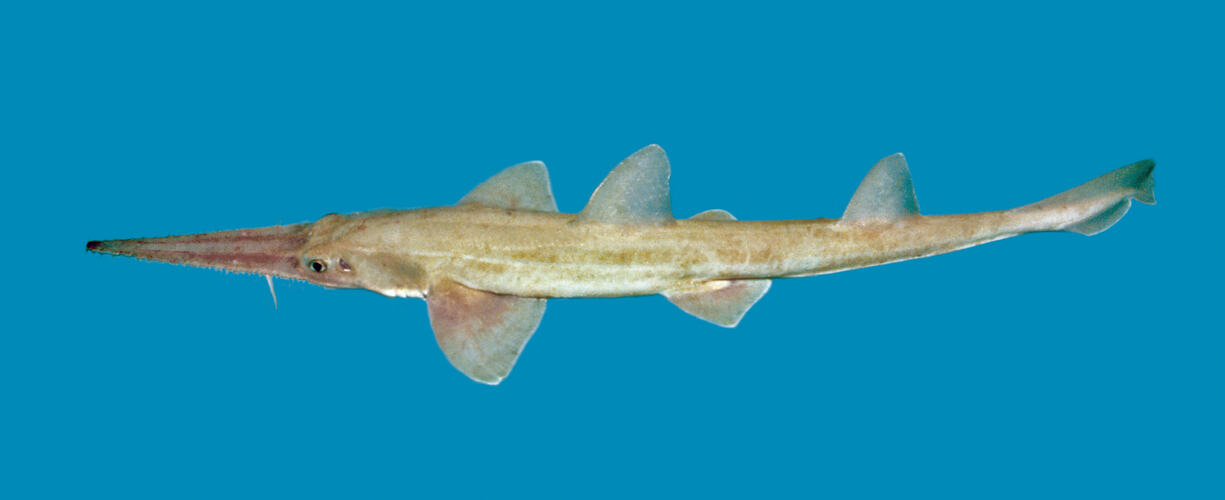General Description
Body long, slender; head flattened, with a relatively broad saw-like snout or rostrum and barbels inserted closer to mouth than to snout tip; nostrils oval, positioned halfway between barbels and corner of mouth; dorsal and pectoral fins entirely covered with denticles. Pale grey to greyish-brown above, pale below. To 1.3 m.
Biology
Sawsharks use their sensory barbels to find their prey, and injure or stun small fishes and invertebrates by vigorously moving their snouts from side to side. They are taken as bycatch in commercial fisheries. Although not considered dangerous, the rostral saw can inflict painful injuries.
Distribution
Southern Australia.
Habitat
On soft bottoms, in depths of 5-110 m.
More Information
-
Animal Type
-
Animal SubType
-
Brief Id
Flattened body, broad saw-like snout, grey to brown above, paler below.
-
Maximum Size
1.3 m
-
Habitats
-
Diet
Carnivore
-
Hazards
Although not considered dangerous to humans, the rostral saw can inflict painful injuries.
-
Endemicity
-
Commercial
No
-
Conservation Statuses
DSE Advisory List: Not listed, EPBC Act 1999: Not listed, IUCN Red List: Least Concern
-
Depths
Shallow (1-30 m), Deep ( > 30 m)
-
Water Column Locations
On or near seafloor
-
Taxon Name
-
Scientific Author
Günther, 1870
-
Common Name
Southern Sawshark
-
Kingdom
-
Phylum
-
Subphylum
-
Superclass
-
Class
-
Subclass
-
Order
-
Family
-
Genus
-
Species Name
nudipinnis

